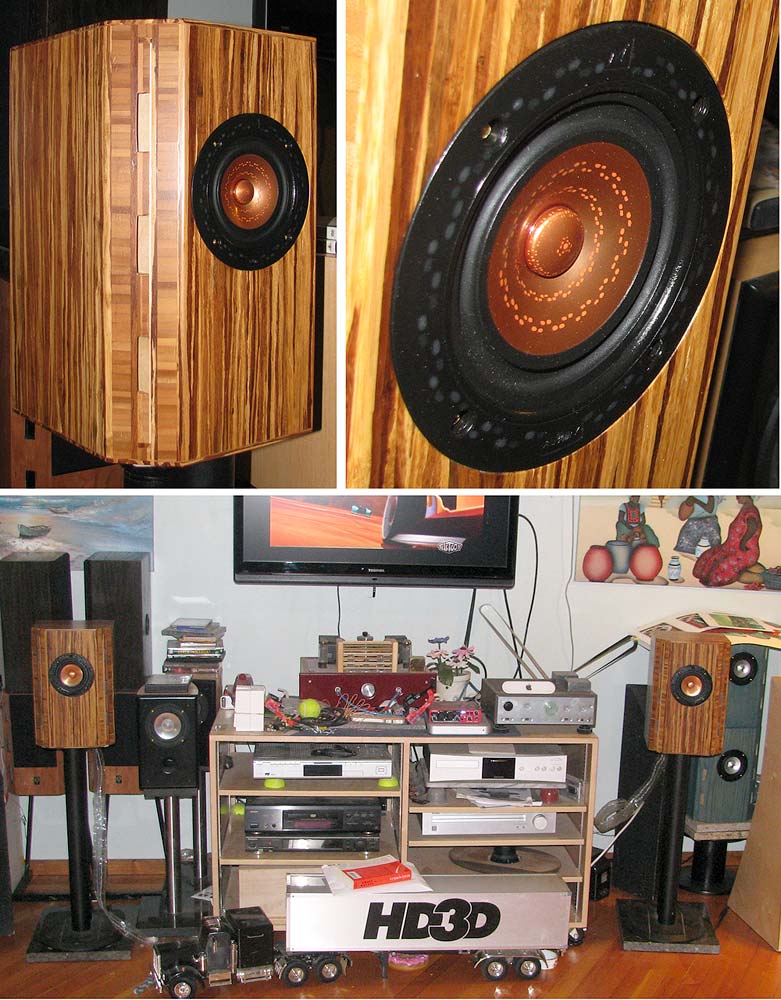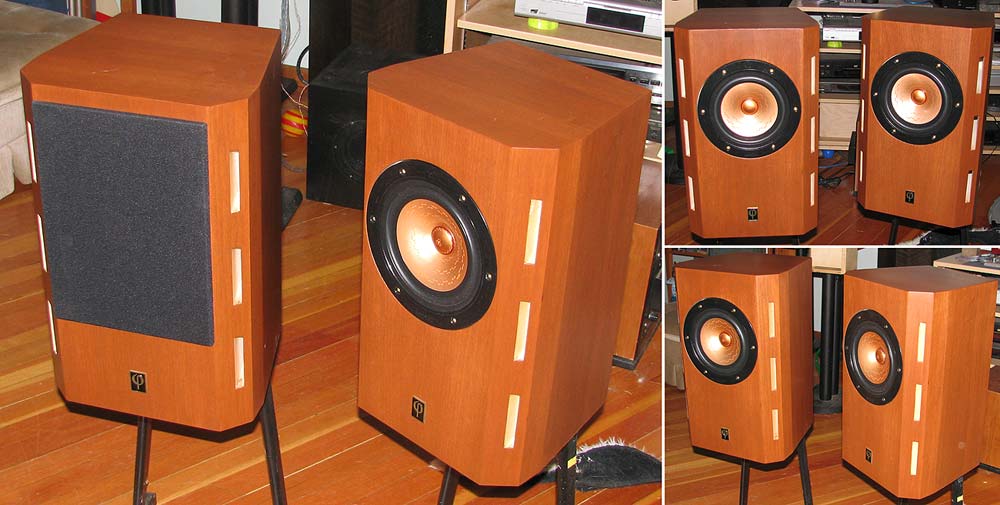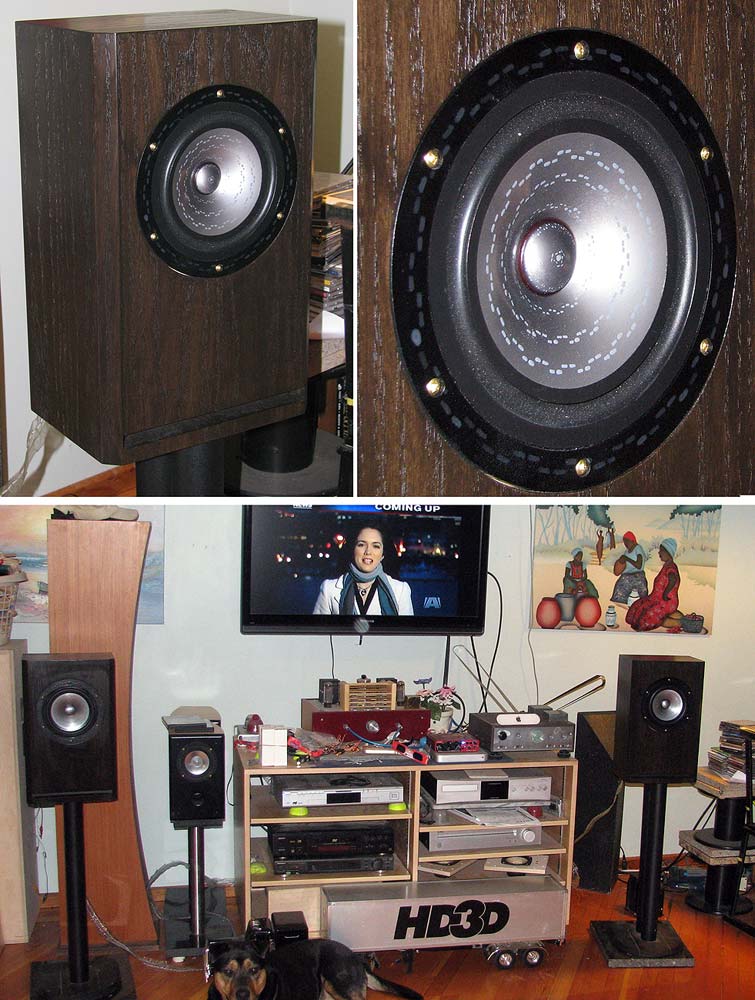Hmm, PRs are acoustically the same as a BR vent, i.e. folks use to [still do in some cases] design them by calculating a vent pipe length with the desired area, then figuring its acoustic air mass to know how heavy it needed to be, so can be placed anywhere a vent would go [except down], so ATM with too much sleep deprivation just guessing you have a leak and/or not properly sized/weighted.Passive radiators seem to play 180 degrees out of phase. I asked this question elsewhere. Is there a position of passive radiators that will cancel the 180 degree out of phase play . If they are on the same front baffle plane seems they playing out of phase. But if pointing to the back would this sort of align the bass waves with bass coming from drivers?
Richard, can you state the purpose of using 4 drivers. Lobing isn't always bad and it would help to know why in this case. Also do you have a link to the Polk paper you are trying to follow?
Curious where that formula came from since it doesn't jive with Altec's published anechoic measurements.
I am replacing each original polk 8ohm driver with 2 dynaudio 17w75xl 4ohm drivers in series. Their other parameters are very close. Originally each Polk speaker had 2 8ohm midbass drivers. Will attach the sda paper in a sec.
Here is the link to the white paper by Matthew Polk. Need to read through it myself
https://www.academia.edu/629629/SDA_Surround_Technology_White_Paper
https://www.academia.edu/629629/SDA_Surround_Technology_White_Paper
I'm found this website.. formula is midway through the page
https://audiojudgement.com/speaker-lobing-polar-response/
https://audiojudgement.com/speaker-lobing-polar-response/
Oh and I completely confused speaker lobing and cross talk cancelation in Polk audio sda speakers. Sda is not meant to get read of speaker lobing. It's sort of to turn sound delivery of stereo speakers into headphone like sound delivery
Basically if someone can help me calculate distances between drivers like planet10 did but when there are 4 6.5" drivers with tweeter in the middle that would be of immense help. Distances to minimize lobing. Which may not be a big issue. But since I am making these boxes would be good to at least optimize the best I can.
Cross over frequency is 2000hz
Cross over frequency is 2000hz
(Preview wasn't available but I began reading the small print)
Ok, so this is a stereo signal applied to these speakers. This would take away the lobing issue.
Ok, so this is a stereo signal applied to these speakers. This would take away the lobing issue.
OK, thanks! But from the response plot it starts dropping around 2 kHz, which works out to ~13543/7 = 1935 Hz, so for now going to stick with what I [think 😉] I know.I'm found this website.. formula is midway through the page
Would you explain the problem or benefit of not coming close to 1 WL rule.Do like many of us did, draw it out to [preferably full] scale to use as a template. At 2 kHz, they will have to be jammed up tight and still not come close to the 1 WL rule.
In theory I could position drivers verticaly almost next to each other. One on top of the other. But would this benedit minimizing lobing. As I understand lobing becomes insignificant as you move further away from the speakers
Do like many of us did, draw it out to [preferably full] scale to use as a template. At 2 kHz, they will have to be jammed up tight and still not come close to the 1 WL rule.
Hmm, apparently haven't figured out this BB's formatting quirks yet as this posst was supposed long gone.... 🙁Would you explain the problem or benefit of not coming close to 1 WL rule.
In theory I could position drivers verticaly almost next to each other. One on top of the other. But would this benedit minimizing lobing. As I understand lobing becomes insignificant as you move further away from the speakers
Anyway, guess I'm not following 100% what you're trying to accomplish, i.e. [4 6.5" drivers with tweeter in the middle] = four square layout centered on the tweeter, so what's a a vertical array got to do with it?
I mean if the tweeter is 1" and the drivers are 6.5", then [6.5 + 1] = max acceptable ctc spacing = ~13543/1/7 = 1934.7 Hz = my sleep deprived knee-jerk, 'off the cuff' response was BS, so time to leave ya'll with it till I can do two things at once. Good luck!
And just one quick question before you leave
How to you convert 1935hz into physical spacing between woofers in mm or cm
How to you convert 1935hz into physical spacing between woofers in mm or cm
Is there an article somewhere about bevel angle vs diffraction? IE how much of a difference is there between a 90 degree edge and a 45 degree edge?
How to you convert 1935hz into physical spacing between woofers in mm or cm
~13,543" [speed of sound [SoS]/1/7" = 1934.7 Hz
1.0" = 2.54 cm = 25.4 mm, ergo ~13543*2.54 = ~34,400 cm = ~344,000 mm
So 34400/1/1934.7 = 17.78 cm or 177.8 mm
Converting 7" = 7*2.54 = 17.78 cm, so use whichever way is most convenient to you.
That said, for the lazy/math challenged [like me], every calculator I've used since at least the '80s had/have some form of conversion capability and IME one can Google/whatever search to find any kind of on-line conversion along with probably hundreds of little programs to download to do it for you.
FYI/FWIW, here's the one I've been using for decades, though assume you'll have to find one for whatever computer/smartphone operating system.
FYI/FWIW, here's the one I've been using for decades, though assume you'll have to find one for whatever computer/smartphone operating system: https://joshmadison.com/convert-for-windows/
Last edited by a moderator:
I'd be surprised if there wasn't, but ATM can only think of Harry Olson's seminal work before most of us was born and is periodically posted on the forums as appropriate and seems like pretty recently too, so do a total 'loudspeakers' search to maybe get enough info to work it out 'good enough'.Is there an article somewhere about bevel angle vs diffraction? IE how much of a difference is there between a 90 degree edge and a 45 degree edge?
Is there an article somewhere about bevel angle vs diffraction? IE how much of a difference is there between a 90 degree edge and a 45 degree edge?
Depends how big it is. The chamfers on the full-on miniOnkens is significantly better. And somewhat to my surprise, the trapezoid shape which essentially caries the chamfers to the back of the box, is even better.


Same alignment, rectangular box, has a higher diffraction signature.

dave
- Home
- Loudspeakers
- Multi-Way
- Ideal speaker shape to make at home